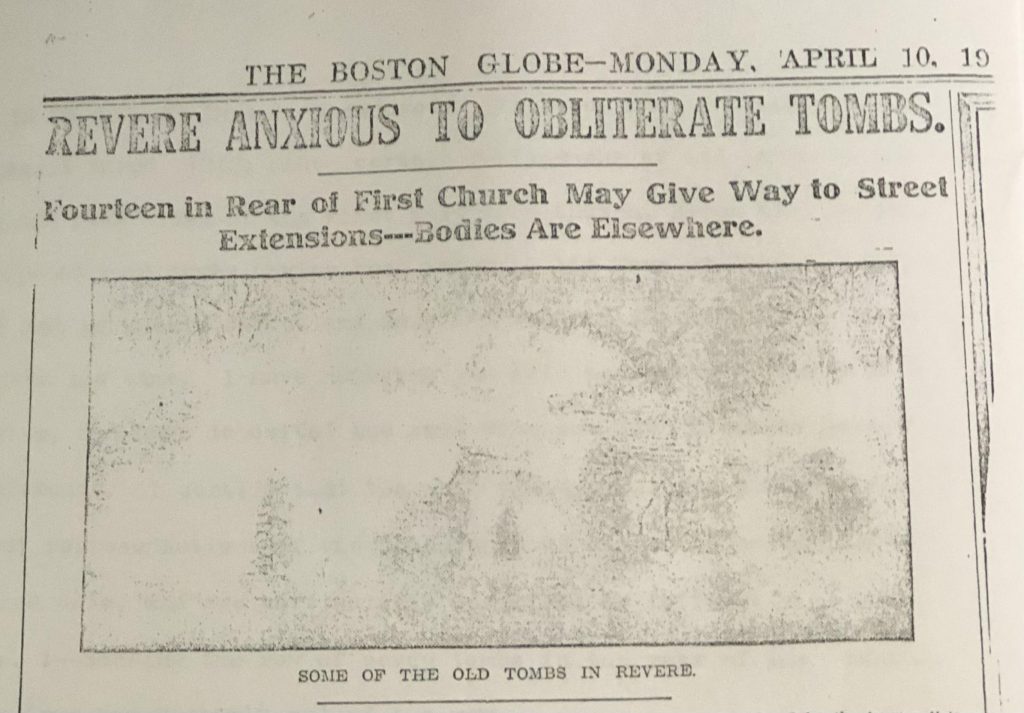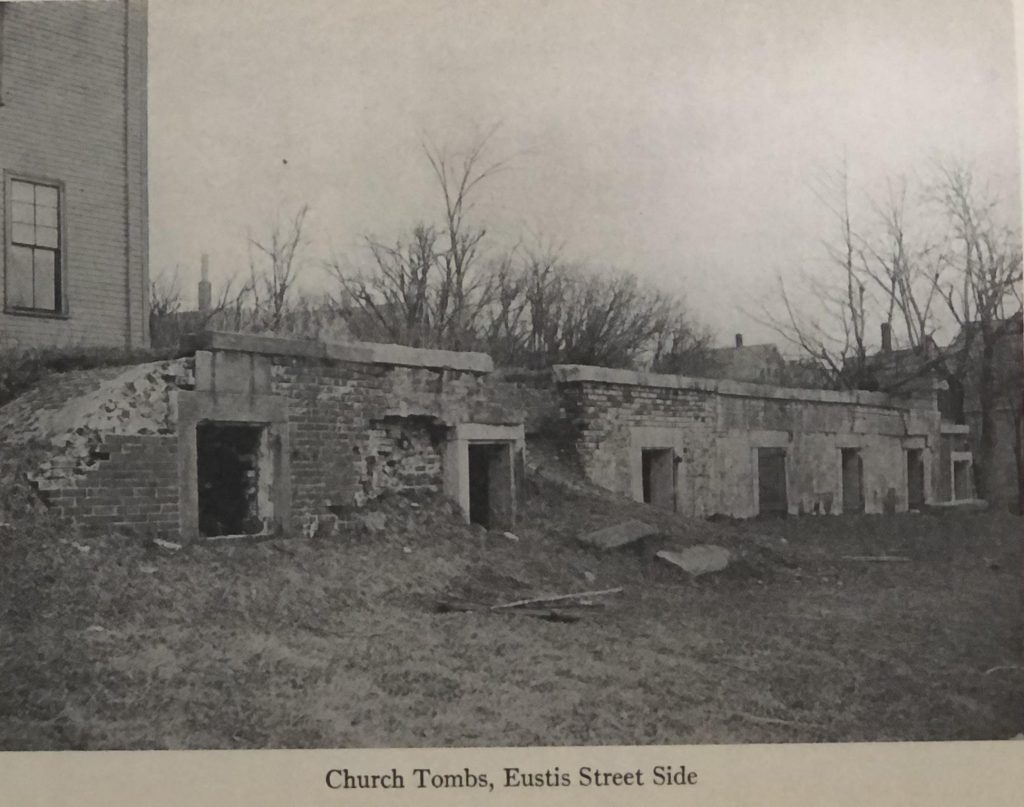Fourteen in Rear of First Church May Give Way to Street Extensions — Bodies Are Elsewhere

REVERE, April 10 – One of the questions agitating residents of Revere Center is the matter of obliterating the tombs in the rear of the old First Church on Beach St. The church has been a landmark for two centuries. It is believed that the tombs have been there in some form most of that period.
By successive steps the town officials stopped their use for burials, removed the bodies to other cemeteries and laid out a street to pass over the site. They were all ready to proceed with the street construction and the matter had gone so far as to receive a favorable recommendation for an appropriation in the finance committee when it was discovered that there were legal obstacles.
Not only is the work held up, but according to the law quoted by the town solicitor the selectmen who laid out the street are liable to a fine of $1,000 or a year’s imprisonment.
There is not much likelihood that anyone will be obliged to pay any of the legal penalties for the oversight as there is no one anxious to prosecute. There may be some disagreement on the advisability of constructing a street in that place, but there are no objections from the supposed owners of the tombs to having them obliterated.
There have been no burials in these tombs for 10 years, or since the board of health passed an order prohibiting their use and sealed the doors. The tooth of time was active, however, and frost and storms broke down the masonry. Children playing about the lot found their way into some of the vaults and one day a mother living near was horrified to find her child rolling a human skull over the grass for a plaything. Later the children used the broken vaults for playhouses.

The original owners having died and many of the families represented having no heirs in this part of the country there was no one to protect the property. In 1909 the town appealed to the legislature and obtained authority to remove the remains in all the tombs to other resting places. The town paid $600 for the work.
The property owners in the vicinity then began agitating for the removal of the tombs. Eustis St., running west from Harris St. comes to a dead end within a few rods of the old church, and one section of the tombs is in a direct line with the street. By extending the street the double purpose of removing the old masonry and joining Eustis St. with Beach St. just west of the church could be accomplished.
There are 14 of the old tombs, built in two rows at right angles on the east and south sides of the church. The Eustis St. extension would take the row south of the church. To eliminate the easterly tier Cary Ave. was laid out as a short street to connect Eustis with Beach St. east of the church. The selectmen last winter approved both takings of land and awarded damages to several owners of property whose land was taken.
The law found by the town solicitor to interfere with the project is Sec. 35, Chapter 78, revised laws. It states that a highway shall not be laid out through land used for a burial place without the previous consent of the owners. Sec. 17 states that land used for a burial place for more than 100 years shall not be taken for any public use without authority of the legislature. Sec. 69, Chapter 212, fixes a penalty of $2,000 or one year imprisonment for “whoever lays out a highway or town road” through a burial place without consent of the owners.
The selectmen have been instructed by vote in town meeting to apply for legislative authority to make the taking.
Of the seven tombs in the tier east of the church six still bear the names of the owners, several being names no longer borne by any residents of the town. Beginning at the end nearest Beach St., the first has simply the name “Cary” on its iron door. No. 2 is marked “Cheever and Harris,” while No. 3 bears “Thomas B. Pratt, family tomb, 1834” cut in a marble plate. No. 4 is marked “Mr. Seth Copeland & Sons, tomb built A.D. 1825.” No. 5 has no mark left, while No. 6 is lettered “H. & B. Crooker’s tomb, 1837.” The last in the row has the family name of one of the original settlers, “John Sales, family tomb, Nov. 1831.”
Of the seven tombs on the tier back of the church the center vault is marked “Hastings, 1837,” and the one farthest west has the lettering “J. Tewksbury, T.J. Woods and J.G. Pratt’s Tomb, 1838.”
Transcribed by Brendan O’Brien, March 2022
